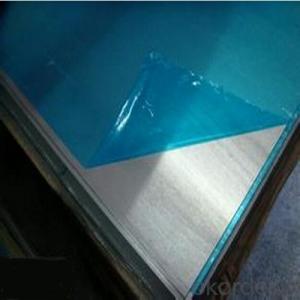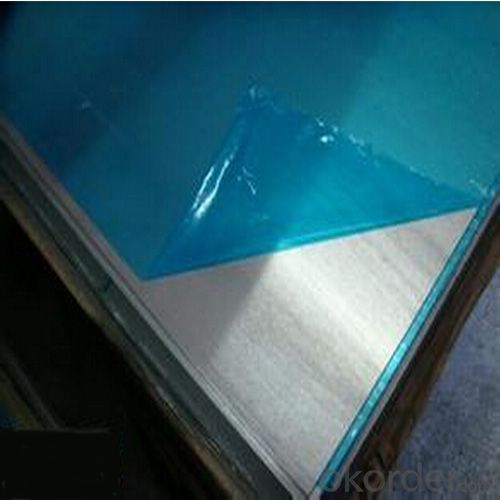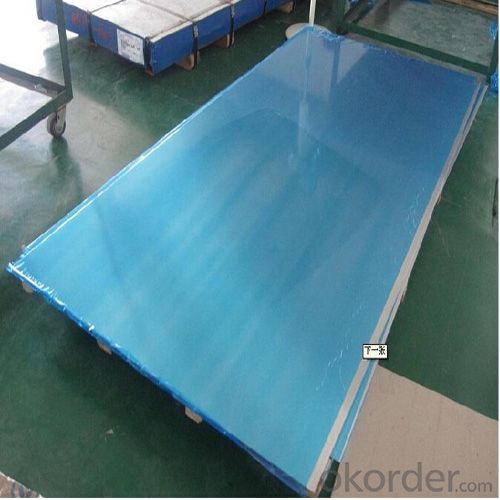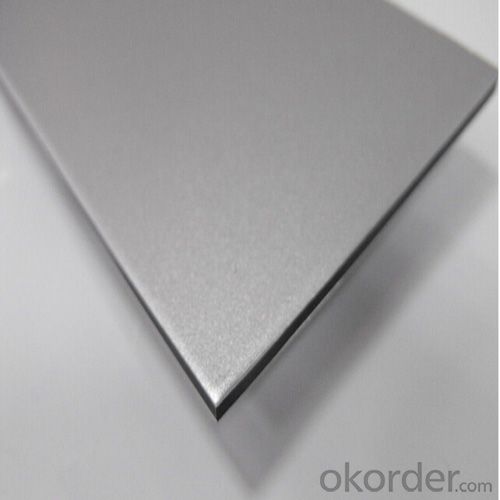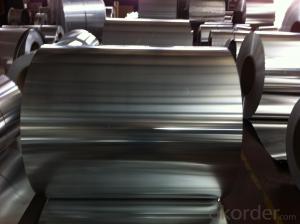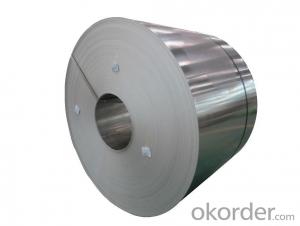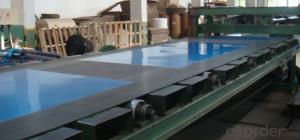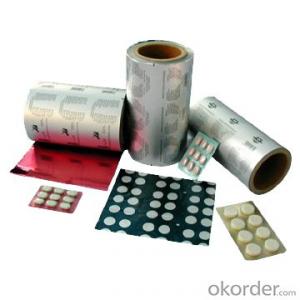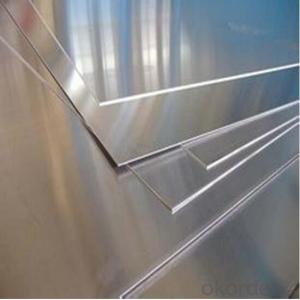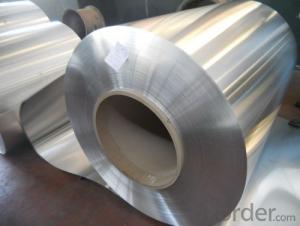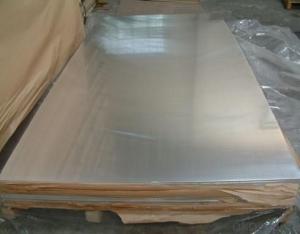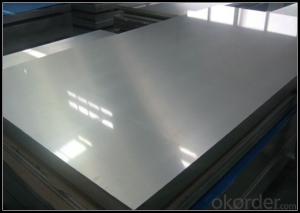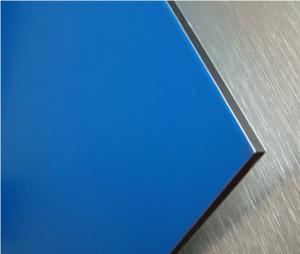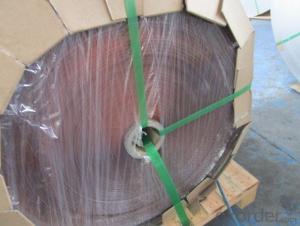4 Foot Aluminum Sheets - High Quality Aluminum Alloy 6061 with Best Price
- Loading Port:
- Shanghai
- Payment Terms:
- TT OR LC
- Min Order Qty:
- 5 m.t.
- Supply Capability:
- 10000 m.t./month
OKorder Service Pledge
OKorder Financial Service
You Might Also Like
Specification
1.Structure of Aluminium Thick Alloy 6061 with High Quality and Best Price Description:
Aluminium Thick Alloy 6061 with High Quality and Best Price is for Construction material with good ductility, polishing ability and corrosion resistance, good electrolytic oxidation, suitable for welding. Have good plasticity qualities in an annealed state suitable when hardened. Very good corrosion resistance, this material is not inclined to stress corrosion cracking. Cutting tool workability in an annealed state is not suitable but is acceptable in a hardened temper. Used for medium strength components with long operation schedules in temperatures from 50°C up to 70°C, applications requiring specific technological properties, corrosion resistance, aesthetic features, when in contact with food, high specification aviation and automotive components. Typical product applications include: airplane cabins, helicopter cockpits, floor coverings, door frames, safety barriers, escalators, furniture, rivet stems, cranes and columns.
2.Main Features of Aluminium Thick Alloy 6061 with High Quality and Best Price:
Good Ductility
Polishing Ability
Corrosion Resistance
Competitive Price
3. Aluminium Thick Alloy 6061 with High Quality and Best Price Images:
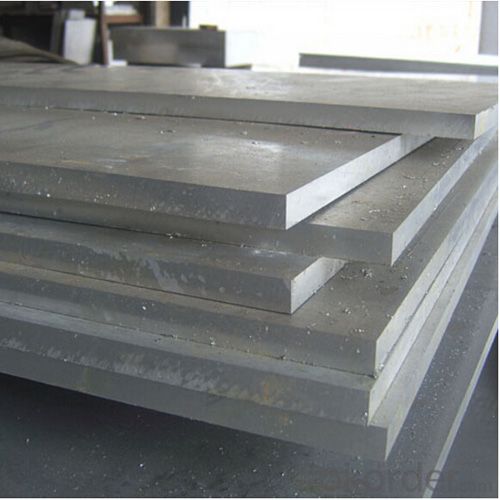
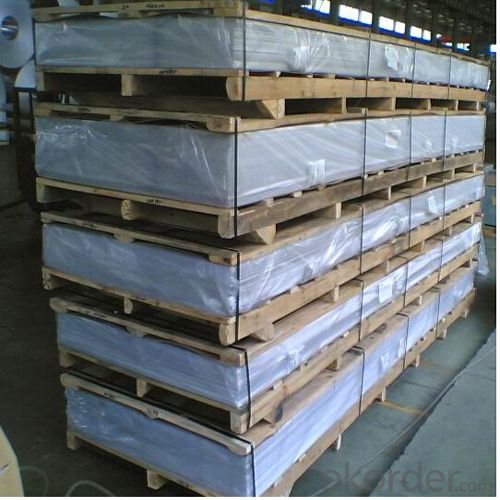
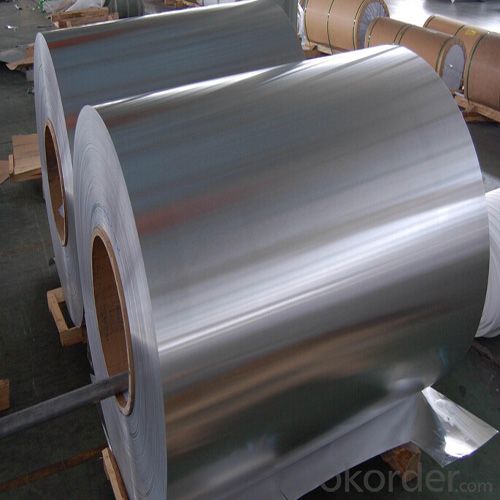
4. Aluminium Thick Alloy 6061 with High Quality and Best Price Specification:
Standard | GB/T3190-2008, GB/T3880-2006, ASTM B209, JIS H4000-2006 .etc |
Thickness | 3-12mm aluminium 5050 H38 |
Width | 1250mm 1000mm or as your requirements |
Length | 3000mm 5800mm or as your requirements |
MOQ | 10 Ton |
Package | Standard export package, by wooden box or as require |
5.FAQ
Q1.How long have you been in this product?
A1:More than 10 years.
Q2. What's the minium quantity(MOQ)?
A2. 5 Metric tons
Q3. How long is shipping time?
A3. 7 (ready-made products)-25 days(OEM)
- Q: Are aluminum sheets suitable for cladding?
- Yes, aluminum sheets are suitable for cladding purposes. Aluminum is a popular choice for cladding due to its numerous advantages. Firstly, it is lightweight, making it easier to handle and install. This reduces the overall weight of the cladding system and minimizes structural load. Secondly, aluminum is highly durable and resistant to corrosion, making it suitable for both interior and exterior applications. It is also weather-resistant, ensuring that the cladding remains in good condition even in harsh climates. Additionally, aluminum is a highly versatile material that can be easily shaped and fabricated, allowing for a variety of design options. It can be painted or coated with various finishes to enhance its appearance and provide additional protection. Moreover, aluminum cladding is low maintenance, as it does not require frequent cleaning or painting. Overall, aluminum sheets are an excellent choice for cladding due to their lightweight, durability, versatility, and low maintenance requirements.
- Q: Are the aluminum sheets suitable for manufacturing lightweight structures?
- Yes, aluminum sheets are highly suitable for manufacturing lightweight structures due to their low density and high strength-to-weight ratio.
- Q: How much is the aluminum plate with a thick 2mm 1000*2000? Thanks
- Aluminum sheet refers to the rectangular plate made of aluminium ingot rolled and divided into pure aluminum plate, alloy aluminum plate, thin aluminum plate, middle thick aluminum plate and pattern aluminum plate.
- Q: which has more volume? a kg of gold or a kg of aluminum? please explain in physics terms
- Think of it this way: Which metal is lighter? How do you know this? Because a given volume of gold weighs more than a given volume of aluminum. So which one has more volume? A kg of aluminum.
- Q: This question asks for an explanation of the various grades of aluminum sheets and the distinctions between them.
- <p>Aluminum sheets are categorized into different grades based on their alloy composition, which affects their properties such as strength, formability, and corrosion resistance. Common grades include 1000 series (99.00% aluminum, soft and malleable), 2000 series (aluminum-copper alloys, strong and heat treatable), 3000 series (aluminum-manganese alloys, good formability), 5000 series (aluminum-magnesium alloys, good strength and corrosion resistance), and 6000 series (aluminum-silicone-magnesium alloys, good strength and extrudability). Each grade has specific applications based on its characteristics, with 1000 series used for general purposes, 2000 series for aircraft structures, 3000 series for decorative applications, 5000 series for marine environments, and 6000 series for structural components.</p>
- Q: What is the weight of aluminum sheets per square foot?
- The weight of aluminum sheets per square foot can vary depending on the thickness or gauge of the sheet. On average, a 1/8 inch thick aluminum sheet weighs around 1.9 pounds per square foot. However, thinner sheets may weigh less, while thicker sheets can weigh more. It is important to consider the specific thickness of the aluminum sheet when determining its weight per square foot.
- Q: I constructed a small hho generator for experimental purposes. I needed to add a cooling condenser to the unit because of a overheating problem. I was using a old heater core from a vehicle, soldered some joints to make some connections. the solution seemed to have eaten the solder I used, which was normal lead free solder used in water pipes. I was going to invest into a trans cooler core which is made of aluminum, but I need to know if the solution will eat up the aluminum. I also thought about using a condenser core from a broken window a/c, which is made of copper tubing. any advise would be very help full
- Figure out the Eknots using a chart. Cu -- Cu2+ = Enot of ? Al3+ --- Al = Enot of ? It needs to be positive to spontaneously react. I believe from memory that Al -- Al3+ is 1.3volts, so the reverse is negative. Meanwhile Cu is something under .5 volts, so it won't be enough to make the reaction work. This is further understood because aluminum requires a lot of energy to smelt from the oxide (which is the reverse reaction of Al3+ -- Al that you're talking about here) Secondly, do your homework man, it's REALLY obnoxious to add the why or why not and phrase everything exactly as your homework asks. Try to ask a question about the topic so you actually learn. For example, what are reduction potentials in terms of, for example, Cu --- Cu2+
- Q: Can aluminum sheets be used for wall cladding?
- Indeed, wall cladding can utilize aluminum sheets. The lightweight quality, durability, and resistance to corrosion make aluminum a favored option for cladding materials. It is frequently employed in both commercial and residential constructions to enhance the external appearance of a structure with an appealing and contemporary aesthetic. The malleability and ease of fabrication of aluminum sheets enable the creation of diverse shapes and sizes, facilitating flexible design possibilities. Furthermore, aluminum cladding demands minimal maintenance, necessitating only sporadic cleaning and upkeep. In summary, aluminum sheets are a versatile and pragmatic selection for wall cladding.
- Q: What are the different methods of cutting aluminum sheet?
- There are several methods of cutting aluminum sheet, each with its own advantages and applications. 1. Shearing: This is a straightforward method that involves using a sharp blade to cut through the aluminum sheet. It is a fast and efficient process, especially for straight cuts. However, it may not be suitable for complex or intricate designs. 2. Laser cutting: Laser cutting utilizes a high-powered laser beam to melt or vaporize the aluminum sheet, resulting in a precise and clean cut. This method is ideal for intricate designs, as it allows for detailed and accurate cuts. Laser cutting is also fast and can be automated, making it suitable for large-scale production. 3. Waterjet cutting: Waterjet cutting involves using a high-pressure stream of water mixed with abrasive materials to cut through the aluminum sheet. This method is versatile and can handle different materials and thicknesses. It produces a smooth and precise cut without generating heat, making it suitable for heat-sensitive materials. 4. Plasma cutting: Plasma cutting involves using a plasma torch to heat and melt the aluminum sheet, creating a cut. It is a fast and cost-effective method, especially for thicker sheets. However, the cut might not be as clean compared to laser or waterjet cutting. 5. CNC milling: Computer Numerical Control (CNC) milling involves using a rotating cutting tool to remove material from the aluminum sheet, creating a cut. This method is precise and can produce complex shapes and designs. It is commonly used for prototypes or small production runs. It is important to consider factors such as the desired cut quality, complexity of the design, material thickness, and production volume when choosing the appropriate method for cutting aluminum sheet.
- Q: I am looking to purchase a pressure cooker and the size that i want comes in aluminum while alot of the others are made from stainless steel. I am wondering if the metal makes a difference in the funtionality and if one doesn't stand up as well as the other.
- Aluminum Pressure Cooker
Send your message to us
4 Foot Aluminum Sheets - High Quality Aluminum Alloy 6061 with Best Price
- Loading Port:
- Shanghai
- Payment Terms:
- TT OR LC
- Min Order Qty:
- 5 m.t.
- Supply Capability:
- 10000 m.t./month
OKorder Service Pledge
OKorder Financial Service
Similar products
Hot products
Hot Searches
Related keywords
